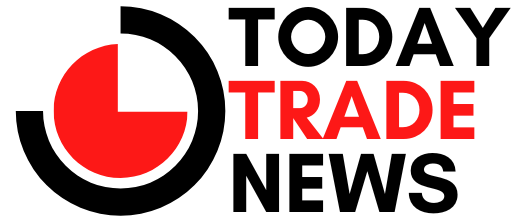
Highlights:
– The U.S. economy shrank 0.3% in the first quarter of 2025 due to high levels of imports linked to Trump’s trade policies.
– Imports surged by 41.3%, while consumer spending slowed but remained positive.
– Inflation rose significantly, potentially impacting the Federal Reserve’s interest rate decisions.
The U.S. Economy Contracts in Q1 2025
The U.S. economy experienced a contraction in the first quarter of 2025, with the Gross Domestic Product falling by 0.3%. This decline comes against the backdrop of a surge in imports driven by fears of escalating tariffs under President Donald Trump’s policies. Economists had initially anticipated growth but revised their projections due to the unexpected rise in imports. The negative growth figure marks the first quarter of such decline since 2022, and it raises concerns about the impact of trade policies on economic performance.
Concerns over the impact of Trump’s policies were further highlighted by a sharp decline in federal outlays and a slowdown in consumer spending during the period. The growth in personal consumption expenditures was positive but notably lower compared to previous quarters. Notably, private domestic investment saw a considerable increase, potentially influenced by tariff-related dynamics. These economic shifts underscore the interplay between trade policies and domestic economic performance in the current political landscape.
Inflation and Federal Reserve Dilemma
The GDP report for Q1 2025 provided mixed signals for the Federal Reserve, with considerations for interest rate adjustments. While the negative growth figures might prompt discussions on lowering interest rates to stimulate economic activity, inflation readings present a contrasting picture. Inflation, as measured by the Personal Consumption Expenditures price index, saw a notable increase, raising concerns for policymakers. The core inflation readings, excluding volatile components, also registered significant rises, prompting a closer scrutiny of long-term inflation trends.
The dynamics of inflation and economic growth pose challenges for the Federal Reserve’s decision-making process. Markets anticipate rate cuts in the upcoming meeting, reflecting a delicate balance between sustaining growth and managing inflation pressures. Amidst ongoing trade negotiations and escalating tariff threats, the economic landscape remains volatile, with implications for job creation and consumer confidence. The looming possibility of recession and the intricacies of trade agreements further heighten uncertainties in the economic outlook.
Implications and Future Outlook
The latest economic data paint a complex picture of the U.S. economy, influenced by trade policies, inflationary pressures, and consumer behavior. The reported decline in GDP and the corresponding rise in inflation signal challenges for policymakers navigating economic uncertainties. The Federal Reserve faces a dilemma in balancing interest rates to support growth while curbing inflationary risks. As markets await key employment data and closely monitor trade negotiations, the trajectory of economic recovery remains uncertain.
Looking ahead, questions arise about the sustainability of economic growth, the resilience of consumer spending, and the potential impacts of policy decisions on market stability. How will trade negotiations and tariff actions influence economic outcomes in the coming quarters? What strategies can policymakers adopt to address the dual challenges of stimulating growth and managing inflation effectively? The evolving economic landscape demands a nuanced approach to policy-making and a comprehensive understanding of the interconnected factors shaping the trajectory of the U.S. economy.
Editorial content by Jordan Fields


















